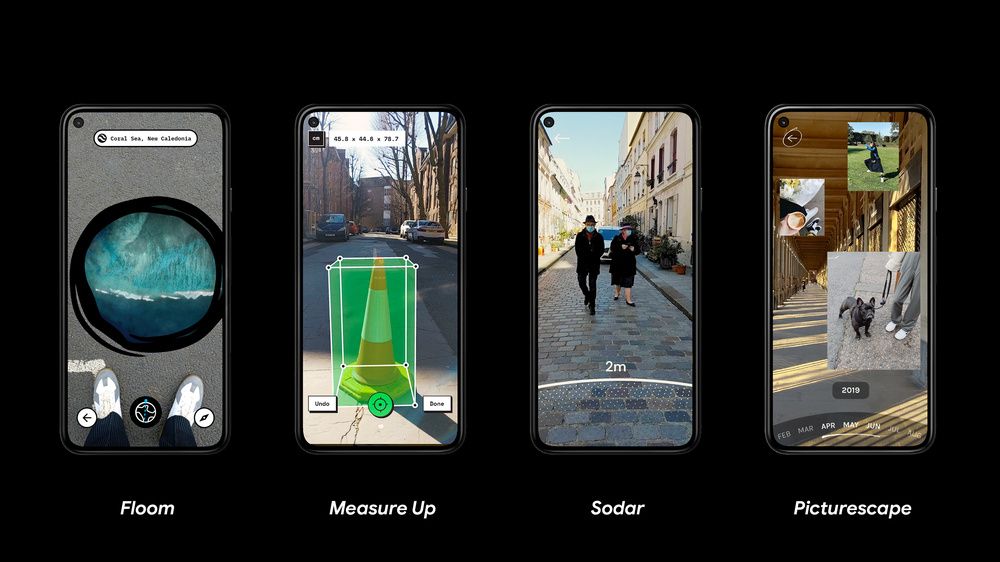Google has announced a series of new WebXR apps — AR and VR experiments on the web — that can do things like measure space, tunnel through earth, and visualize social distancing guidelines. The latest collection of experiences is designed to showcase what this technology can do.
“Augmented and virtual reality are opening up the possibilities of how we interact with the world and information around us,” Google said. “WebXR brings together AR and VR on the web to make them more convenient and widely accessible.”
In a blog post, Google highlights four WebXR experiences: Floom, Measure Up, Sodar, and Picturescape. Google said Picturescape is coming soon, and will allow Google Photos users to explore their library in augmented reality.
Google said Floom is a “fun new way to explore the planet, built with WebXR and Google Maps.” You can open up Chrome and tunnel through the earth to see what’s on the other side, whether it’s the ocean or a land mass. We’ve all wondered where’d we go if we dug straight down, and Google’s Floom has the answer.
Next is Measure Up, which allows users to easily calculate the length, area, and volume of everyday objects. You can place pins along the edges of objects and get the height, widget, and depth — all without a tape measurer. We’ve seen ideas like this implemented before, but having the tool available in the browser makes it a lot more accessible.
Third is Sodar, or “social distancing radar.” Sodar will highlight six feet (or two meters) around you as you move, so you can always keep your distance from those around you. The company previously unveiled Sodar following the onset of the pandemic.
Finally, Google has announced Picturescape, which the search giant said will allow users to explore memories in augmented reality. It looks like a neat concept, but looks much more suited to VR. We’ll gladly give it a shot once it’s available.
You can try Floom, Measure Up, and Sodar by visiting Google’s WebXR experiments page on your Android phone, which needs to support ARCore.

